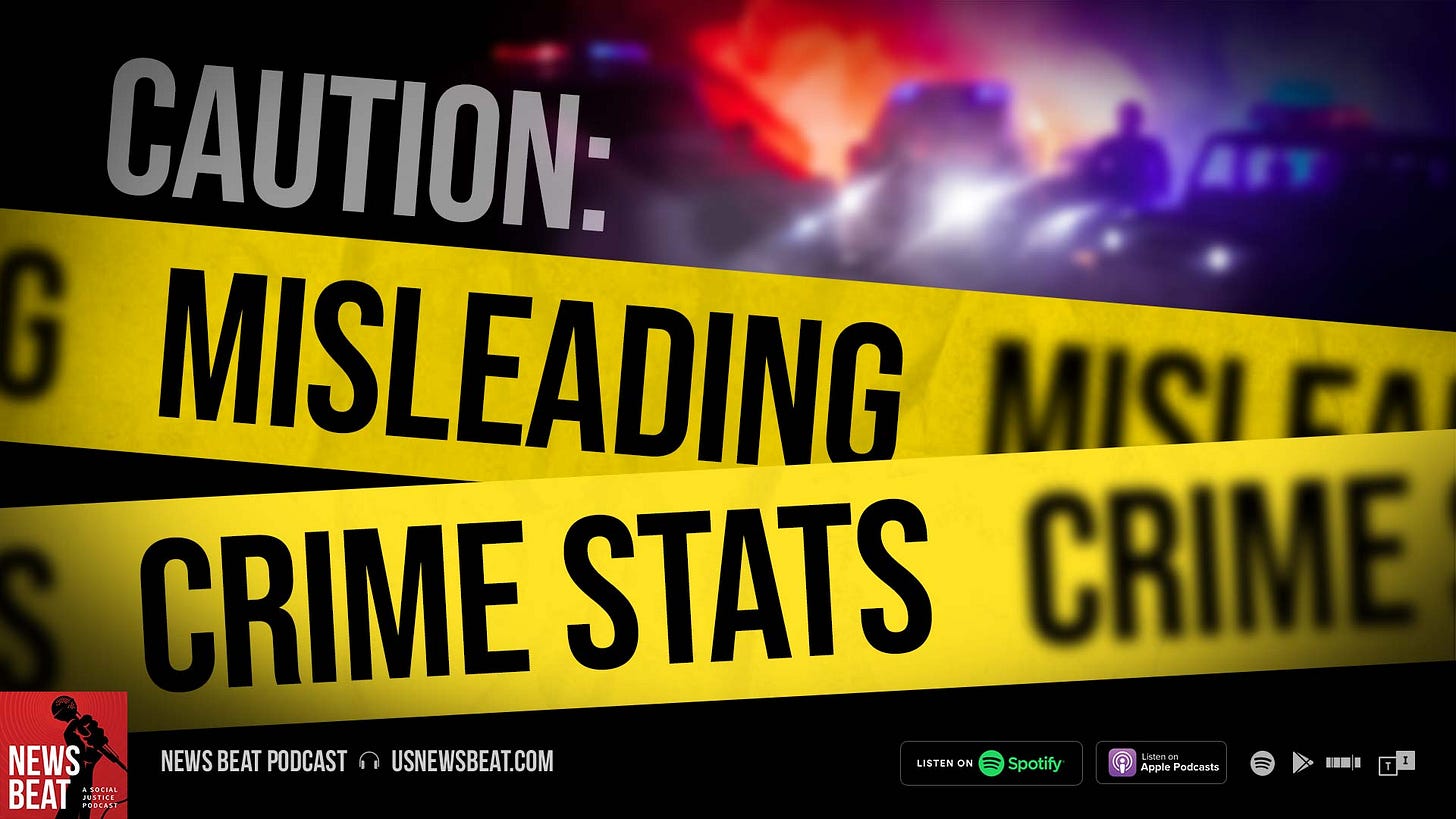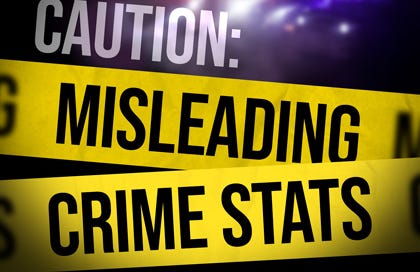Caution: Misleading Crime Stats
The media and lawmakers have taken to the airwaves to blame a rise in violent crime and murders on police reform and "defund."
News Beat is a multi-award-winning podcast that melds hard-hitting journalism with hip-hop to inform, educate, and inspire. Our latest episode examines the spike in violent crime last year, potential factors, and whether defund and police reform are really to blame. Hint: It ain’t as simple as that.
Okay, we’re sure you’ve heard variations of this argument: “Crime is on the rise because of defund the police!”
Since last spring, politicians, right-wing pundits, the media, and so-called “centrist” Democrats have weaponized the rise in violent crimes, including murders, to demonize police reform efforts and blame progressives. Sure enough, they conveniently neglect to mention that crime is up across the country—in cities run by Democrats and Republicans, and in communities of all sizes. Historically, fear mongering by law enforcement and so-called “tough-on-crime” lawmakers has proved successful in convincing the American public that law and order policies are the best way to reduce criminal activity.

Why We Covered This Topic
Remarkably, a majority of Americans surveyed over the summer said they believe crime is higher now than in the 1990s and only 14 percent understand that violent crime is actually lower now than it was three decades ago.
Since the media does an embarrassingly poor job at reporting on crime, we’re not surprised the general public is convinced that criminal activity is as high as ever.
For context, here’s what the violent crime rate actually looks like over the last 30 years, courtesy of the FBI’s Crime Data Explorer:
And here’s the rate of homicides over that same period:
As you can see, both violent crimes and homicides have dipped considerably since the height of the tough-on-crime era in America—a period characterized by punitive sentencing policies, the resurgence of the war on drugs, and a prison construction boon. It’s also important to note that the data does show a spike in homicides in 2020—but the numbers are not nearly as high as what the country experienced in the early ’90s. In fact, as the crime analyst Jeff Asher wrote in his analysis of the violent crime spike for The New York Times: “[E]ven with a rise in murder in 2020 of 15 percent to 20 percent, the nation’s murder rate would be roughly in line with where it was in the mid-2000s and about 40 percent below where it stood 30 years ago.”
But Americans clearly don’t see it that way.
So why did violent crime—particularly murders—rise in 2020? The answer is we don’t know. Sure, as journalists we’d love to say we had the answers, but the truth is we don’t, and neither do many criminologists. It’s difficult to draw conclusions from crime stats, which are often politicized to fit a particular political narrative.
What we do know is that 2020 witnessed the largest year-over-year homicide increase since 1968. It was also one of the deadliest years for gun violence in recent history, which includes suicides.
Experts point to a variety of potential factors. The pandemic, they say, likely played a large role in the uptick. Millions went unemployed during country-wide shutdowns, schools were forced to go remote, critical community-based programs, including violence intervention initiatives, were temporarily suspended, hundreds of thousands became infected with the virus, and the country erupted over a string of police killings, most notably the slayings of George Floyd and Breonna Taylor.
As Asher and data scientist Rob Arthur wrote in The Intercept in February: “Any explanation for the national spike in homicides in 2020 needs to account for why most U.S. cities saw an increase, and the available evidence suggests that we should avoid simplistic or local explanations to explain what was almost certainly a complex national phenomena.”
What You’ll Learn in This Episode
Violent crime did increase last year, but this happened during a pandemic, a recession, racial reckoning, and one of the most tumultuous elections in history.
Nonviolent crime actually fell during this period.
There isn’t a single explanation for the rise in violent crime and gun violence.
The majority of the police departments in the United States have not been defunded. In many cases, police budgets actually increased.
There are various solutions to reducing violence municipalities can utilize that don’t involve more policing.
Who We Interviewed & What They Said
Takenya Nixon, an Assistant Public Defender with the Law Office of the Cook County Public Defender, encompassing Chicago
“When you have the oversaturation of police in Black and Brown communities—specifically, the police foster the energy or the negative energy around people in the community, not trusting and not liking the police, and would rather not have them there because they don't see the police as somebody that's going to help them or someone that's going to stop what is happening in their neighborhoods. They see them as a threat, just as threatening as, you know, some of the people who might be causing some of the gun violence in their neighborhood.”
Akela Lacy, a Politics Reporter at The Intercept
“There's not one explanation for why we saw this spike in gun violence and murders in the last year. But there is a quick attempt by many in mainstream media and particularly among politicians on the right to ascribe blame to any of the groups that I just laid out…whether it's Black Lives Matter, progressive prosecutors or people who are talking about the issue of mass incarceration.”
Anna Harvey, Professor of Politics and Affiliated Professor of Data Science and Law at New York University
“Many of those connected services and programs and supports just evaporated during 2020, during the COVID pandemic. The level of social contact dropped significantly, and the courts closed and many programs closed. And it was hands-off for many people. So many of the social services were less available, were only available virtually, we have no idea how effective that is.”
Additional Resources
“Murders Are Rising. Blaming a Party Doesn’t Add Up” by the aforementioned Jeff Asher
“Murder Rose by Almost 30% in 2020. It’s Rising at a Slower Rate in 2021,” also by Asher
“Cities Say They Want to Defund the Police. Their Budgets Say Otherwise.”
Join the News Beat Podcast Family!
Subscribe to our Substack to ensure you receive information about episodes, relevant stories, and more.
You can listen to News Beat on your favorite podcast app. The button below will enable you to subscribe wherever you listen to pods.
Please share our Substack to help build this community and support independent media.





